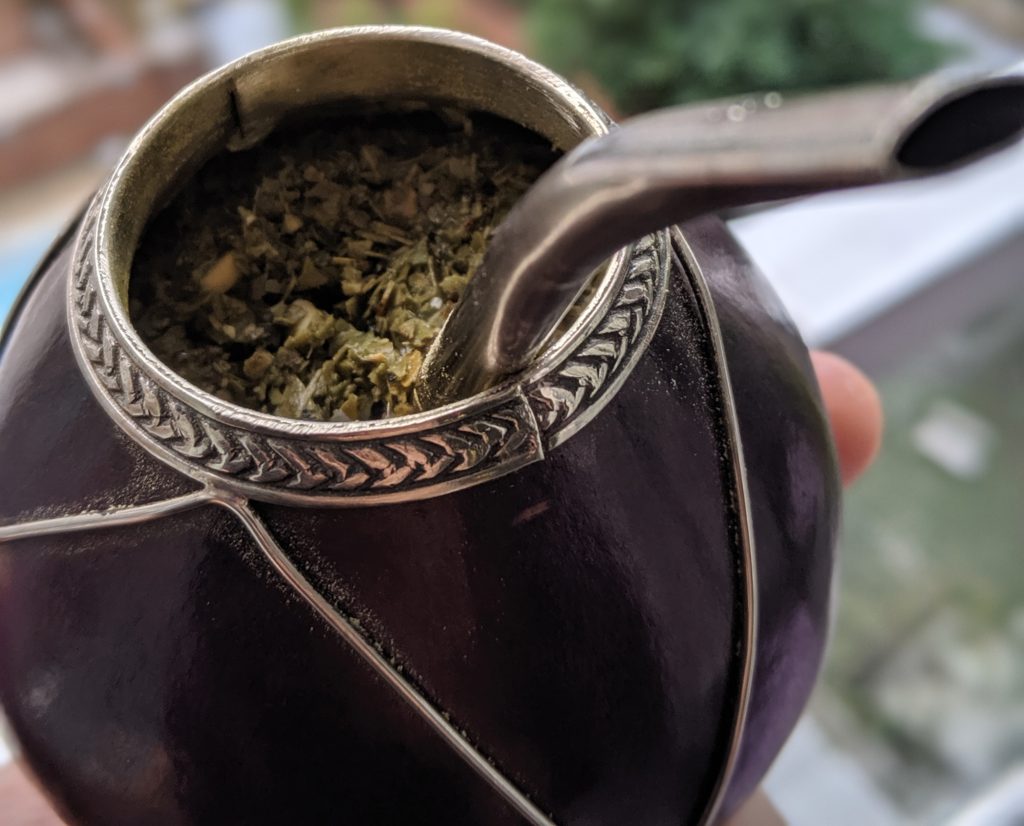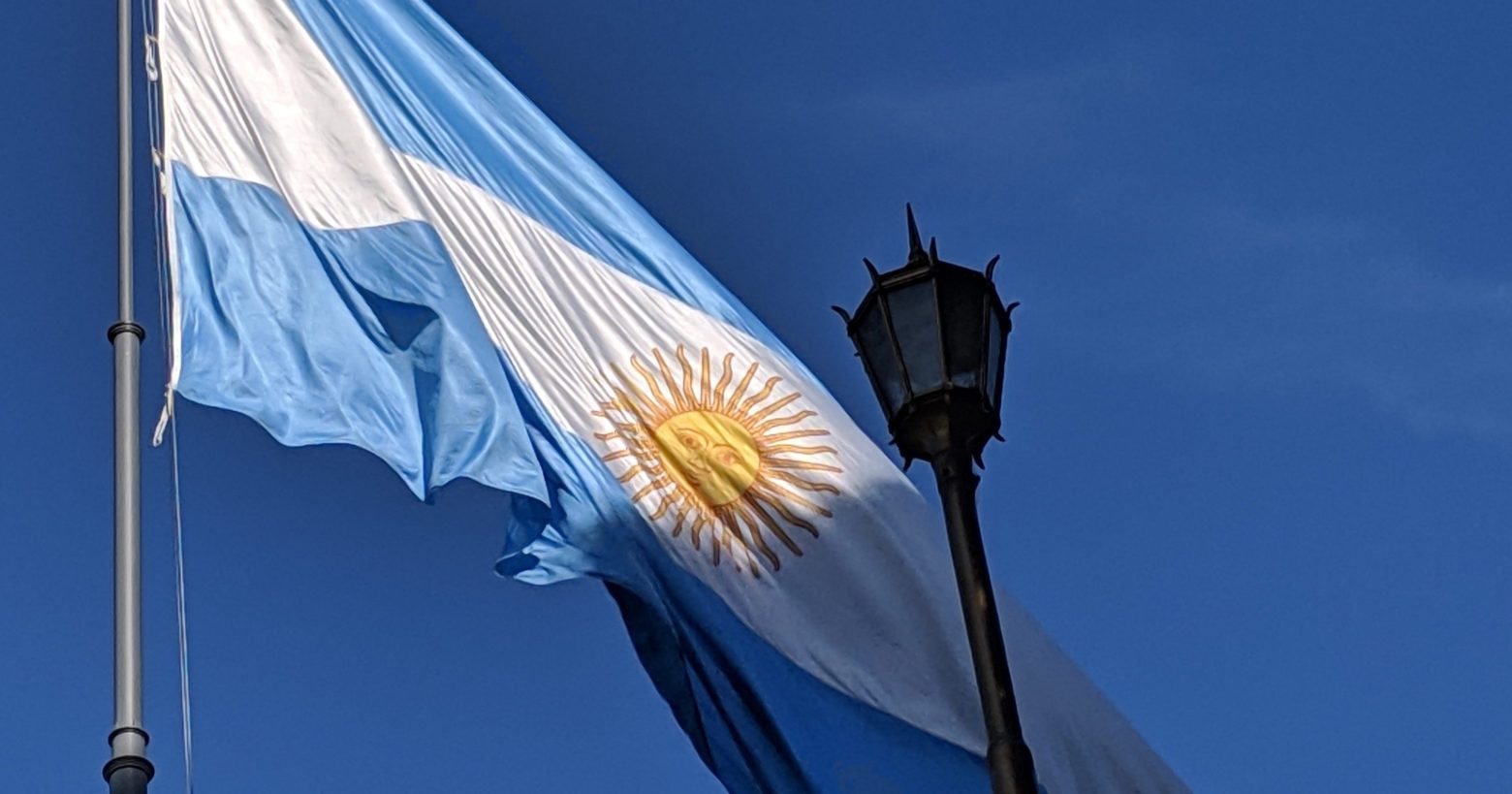I’m sure most of you have heard about the crazy huge blackout that happened this past Sunday, June 16, in Argentina, Uruguay and Paraguay. Justin and I did not experience it, because we were flying back from Peru that day. It did cause a little bit of a backup at the gates at the airport in Santiago, Chile (our layover on the way to Buenos Aires), because flights had been delayed. By the time we got back to Buenos Aires that night, news reports said 89 percent of Argentina had power restored, and we had power. However, apparently blackouts (although on a much smaller scale) are not uncommon in Buenos Aires in the summer, when everyone’s using the air conditioning…which brings me to the topic of this blog post: unique characteristics of life in Buenos Aires!
Here are some of the more distinguishing factors of life in Buenos Aires that have stood out to us during our time here.
Mate (Mah-tay) All Day, Every Day
Mate (pronounced mah-tay) is a bitter, caffeine-filled tea that you drink from a hollowed-out gourd. You put the hot water in with the loose tea and drink it through a special straw, or bombilla, which has a filtering mechanism so the loose tea doesn’t get in. Go to any park in Buenos Aires, and you’ll see people drinking mate. It’s meant to be shared and passed around among friends. The first time I tried it, I thought it was pretty bitter and didn’t love it, but I like it more each time I have it.
To give you an idea just how widespread it is here, Justin and I went to visit an animal sanctuary for the day, and the directions on what to bring for the day, along with your lunch, lawn chair and rain jacket, included mate supplies! And you’ll see hot water dispensers around, like events at the city’s convention center, so people can get their mate fix.

I’ve been told by multiple Argentinians that Uruguayans are even more into mate, and they’ll carry around their thermoses and drink it in the street (here you won’t really see that). I can’t vouch for that yet, but when we take a trip to Uruguay, I’ll definitely be on the lookout!
Different Types of Protests and Strikes
Our first morning here, we were sitting at a cafe around the corner from our apartment, when all of the sudden we heard banging on drums and chanting. We were a little alarmed, but nobody else seemed bothered by it. A few minutes later, we determined the source of the noise: a march happening the next block over, along a big avenue. People were holding up what seemed like political banners and signs, playing music, chanting and lighting off Roman candles in the tunnel—which seemed dangerous, and if nothing else was just really loud. We later learned that political protests like this are fairly regular in Buenos Aires, especially in the city center.

More recently, about a month ago, we were walking home from dinner one night and heard what sounded like someone playing the bongos from their balcony. Then we noticed a weird number of cars honking their horns. At first, we thought it was something that was happening on the road, but it kept going on. A few blocks later, we realized that all over, people were banging on things in their apartments and honking their car horns. It kind of sounded like midnight on New Year’s! According to my research, this type of protest, which consists of people banging on pots and pans, is called a cacerolazo and is also apparently fairly common. The day we heard it, it was in protest of a court decision regarding the corruption case of ex-president Cristina Kirchner.
There are also public transportation strikes in political protest. There have been at least two since we’ve been here, and one that was supposed to happen but was canceled last minute.
Now, why so many strikes and protests? A tour guide our first week here told us that the protesting is worse now since the presidential election is coming up in October, but that it’s still a pretty common thing, regardless. I don’t want to pretend to understand the situation, but my hunch is that having years of a dictatorship (in the late 1970s and early 80s) and current unrest, like the rising inflation (which I talk about next), makes people want to speak out.
Inflation Is a Problem
Unfortunately, this is not a fun observation, but everyone’s attuned to the inflation rate here, which fluctuates a lot. And when it goes up, understandably people talk about it. When we first got here, the rate was about 42 pesos to $1, at one point it went up to 49, and now it’s back to about 43. My Spanish teacher told me that a few years ago, it was less than 18 pesos to a dollar. (I just looked it up, and in 2016, the rate was usually about 14 or 15 pesos to a dollar. In 2015, it was less than 10.)
Give Up Your Seat on the Subte
People might think I’m crazy, but I think people are very courteous here in certain aspects of riding the Subte, the Buenos Aires subway system. Just to be clear, not when it comes to letting people get off the train before you get on, and not when it comes to moving out of the doorway so you can get on the train. But when older people and parents with kids get on the Subte, people jump to give up their seats! I swear I don’t see that in the U.S. But maybe this happens in the U.S., too, and I was always just too entrenched in my commuting-induced haze to notice?

Little Doctors Walking Around
This is a minor observation, but a fun fact! If you spend a few days in Buenos Aires, you might notice kids walking around in what look like white lab coats. In the words of the tour guide we had during our first week here, they look like “little doctors.” And they do! But apparently this is just what public school kids wear. (Private school kids wear uniforms.)
All Parks Are Dog Parks
This is Justin’s favorite saying of Buenos Aires! A lot of people here don’t walk their dogs on leashes, which from a health and safety standpoint isn’t great, but they’re all pretty well behaved. In any park, you can see a bunch of dogs running around and playing on their own. Dog walkers also bring huge groups of dogs to the parks to hang out. It’s pretty cute!
In conclusion, I just want to say that these are only our observations, and after only three months, we are definitely not experts on Argentinian culture! Also, stay tuned for future blog posts, which will include our trip to Peru!
